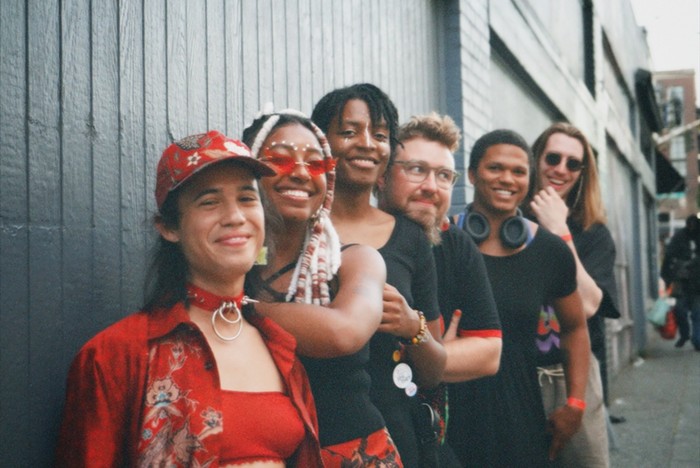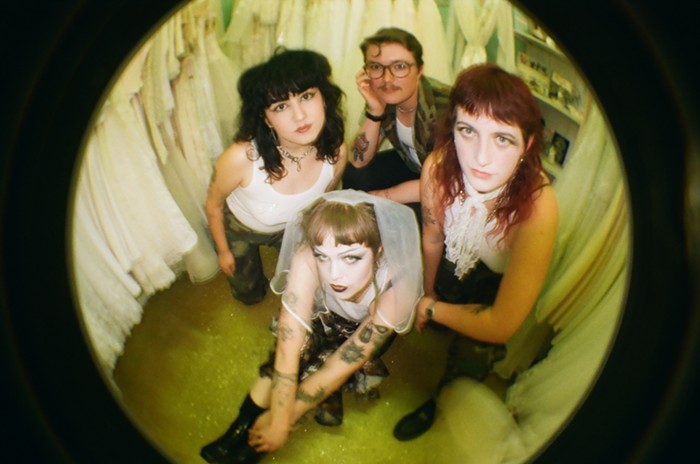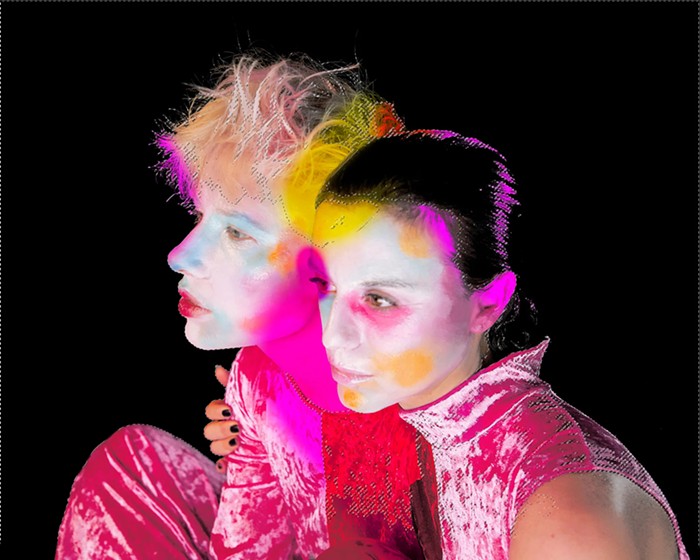You could fill up a dozen zoos with all the animal-inspired bands floating around these days. Perhaps this trend stems from musicians' desires to be distanced from an increasingly questionable human agenda or maybe they're just pining for a simpler rock-and-roll era populated by Byrds, Monkees, and Turtles. Like a Cherokee choosing his spirit animal, picking a creature to symbolize your art shouldn't be taken lightly, and the fact of the matter is that many of these names just seem tacked on. Arctic Monkeys? I don't get it. Cat Power? She's always come across more mousy than feline. And it's best to not even get started with the legions of wolf-influenced band handles. At first glance, Brooklyn's soft rocking Grizzly Bear seem to be yet another mismatched example, but further scrutiny into the creature in question yields some surprising similarities.
As the grizzly population decreases, scientists often favor a catch-and-release technique to keep tabs on the bears, but these moody beasts, like their musical counterparts, are not so easily tagged. One of the first misconceptions listeners have about Grizzly Bear is that the group's acoustic sensibilities make them card-carrying members of the neofolk movement. The band's bass player/electronic wiz, Chris Taylor, is quick to separate himself from such generalizations. "The term 'folk' is a pretty broad category in my opinion. We don't feel a kinship to neofolk, as we have never really played shows with those bands, and we don't try to make 'folky' music. Although there are acoustic guitars in the music, the songs rarely remain in that zone of finger plucking and all."
What does the band sound like then? Peel back all the postmodern bells and whistles and what you'll find is pop music, pure and simple. Where their debut, Horn of Plenty, offers fragmented glimpses into Grizzly Bear's lair, their most recent offering, Yellow House, blows the doors open for all to see. The album finds mesmeric guitar and banjo brocades pleasantly colliding with rainbow vocal surges to forge a kind of pop music as unpredictable as it is familiar. Critics like to christen every musician with a melodic sweet tooth as a Brian Wilson disciple, but the comparison sticks here. Unlike Beach Boys devotees such as the High Llamas, though, Grizzly Bear favor broad tonal strokes instead of reverent reenactments of classic '60s arrangements. Yellow House is flickering with sentimentality, but its approach sidesteps any sappy California idealism and tenders its emotions with a cool, East Coast restraint.
Throwing potential trackers further off their scent, the release of Yellow House finds the band signed to Warp Records, the British label that's built its reputation on knob twiddlers like Squarepusher and Boards of Canada. "The label is in the process of moving away from electronic music," says Taylor. "They just started getting too many demos from people that were Aphex Twin rip-offs, and there just isn't the interest in electronic music now as there was when the label did the bulk of its most high-profile work."
Grizzlies in the wild are solitary creatures, and, besides mating rituals, they don't always play well with others. Grizzly Bear the band aren't much different. The project itself began as a very isolated experience, with "founding Bear" Edward Droste recording the bare-bones audio of Horn of Plenty alone in his apartment with a hand-held tape recorder. Later additions of Taylor, Daniel Rossen, and Christopher Bear (last name coincidental, oddly enough) would add greatly to the band's songwriting pool, but finding common ground hasn't always been easy. Taylor is surprisingly frank when discussing the behind-the-scenes struggles that colored the Yellow House sessions.
"I would sit there 5 feet to 10 feet away from whoever I was recording, and we'd just go through songs, recording different parts, fleshing out ideas, putting down ideas, arguing until a part got dropped. [We] fought a lot; [we] drank more. I smoked lots and lots of American Spirits—a nostalgic yellow pack of cigarettes tastes like arguments and success all at the same time. I would stay up all night many times working on sound quality/sonic textures of things, and then we would talk about how to put everything together over and over again. It felt like everyone was working so hard on what they were trying to accomplish until everything felt on the line, and then someone would appear in the room, after not seeing them for six hours, and they would say, 'yeah... so I don't really like that part,' and then another argument."
The stunning end results of Yellow House, however, speak for themselves. Grizzly Bear have learned through trial and error that the ability to work together is often what separates man from beast. "We have learned so much since then—to really talk to one another and get good ideas from people, and to learn how to make new and better ideas. We had to learn to work with each other; that was by far the most challenging part. There were too many good ideas and everyone believed in their good idea, which is good, but too much belief leads to war." 


















